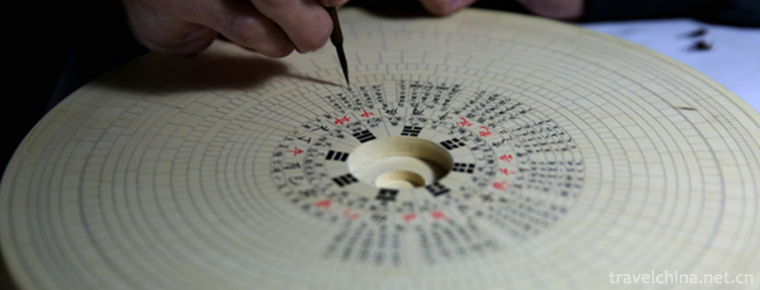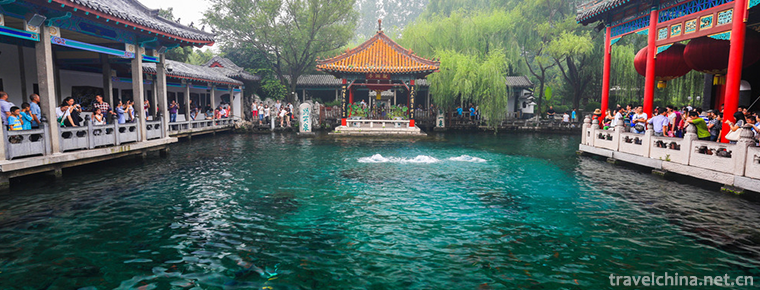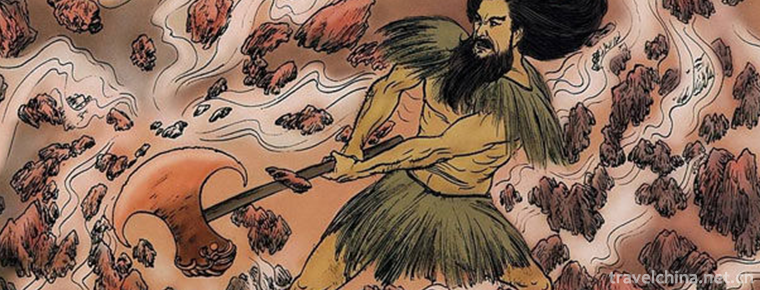2018-12-08

- By ChinaWiki.net
- Chinese Edition
- 2019-06-26
Manufacturing Techniques of Wanan Compass
Wan'an compass making technology, the local traditional handicraft in Xiuning County, Anhui Province, is one of the national intangible cultural heritage.
Wan'an compass production process is complex, taking a specific "tiger bone tree" wood, through seven strict processes such as material selection, tray, grid, winding, writing tray, oil, needle and so on to make a compass.
On May 20, 2006, the technique of making Wan'an compass was approved by the State Council of the People's Republic of China and listed in the first batch of national intangible cultural heritage list, item number_-49. On May 15, 2018, it was selected as the first national catalogue of revitalization of traditional crafts.
historical origin
Wan'an compass production industry rose at the end of Yuan Dynasty at the latest, developed in Ming Dynasty, and reached its peak in the middle of Qing Dynasty.
The earliest famous store of Wan'an compass industry was Fangxiushui compass shop which was famous in the national compass industry in Ming and Qing Dynasties. Subsequently, Hu Ruyi, Hu Ping Ran and Wu Luheng were successively born.
Zhao Jishi, a Wan'an native of Xiuning County in the early Qing Dynasty, wrote in his book "Sending to the Garden" that "Fengshui is the most important thing for Hui people, and that is why they usually construct lawsuits, which shows the prevalence of Fengshui in Huizhou. And this pursuit of geomancy undoubtedly provides a broad market space for the compass. In this situation, the Wan'an compass industry came into being.
In the first year of Yongzheng in the Qing Dynasty (723), Wu Guozhu (Ziluheng, 1702-1760), a generation master of compass, founded Wu Luheng compass shop in Wan'an Town Street, Xiuning County.
In the late Qing Dynasty, the Wan'an compass manufacturing industry declined due to the war.
In the early years of the Republic of China (about 1912), with the gradual recovery and development of Huizhou's social economy, the Wan'an compass manufacturing industry revived and continued to the early 1960s.
After the founding of New China, because of the influence of Marxist-Leninist ideology on the whole country, Wan'an compass's production industry has been suspended for nearly 20 years because of its superstitious belief in geomantic omen and other issues.
In 1982, shortly after China's reform and opening up, all walks of life began to flourish throughout the country, and the production of Wan'an compass resumed one after another.
In 1992, Wu Shui-sen, the successor, registered and established the old compass store of Wu's Direction in Wan'an, Xiuning County. While inheriting the traditional handicraft techniques of Wu-Lu-Heng compass making, he implemented the combination of production, learning and research.
Technological characteristics
The magnetic needle of the Wan'an compass is wire-like, and one end of the guide is painted with red paint. According to the different structure of magnetic needle device, compass can be divided into "water compass" and "dry compass". According to the diameter and size of compass, there are about dozens of kinds, namely 2, 2.5, 3, 3.5 to 16 inches. According to the plate type, there are mainly "three-in-one plate", "three-in-one plate", "comprehensive plate", "Xuankong plate" and "Zhuzi plate".
Wan'an compass is mainly made of two kinds of high-quality wood, tiger bone wood and white fruit wood (Ginkgo biloba), with tung oil and varnish coated on the bottom. On the compass surface, several concentric circles are made from the center, and magnetic needles are placed or installed in circular grooves (i.e. Tianchi) except for the central part. In the early stage, there were few layers, only one or two layers, and then gradually increased to tens of layers. Because of the different geomantic theory, the compass stratification and grading are different. During the Ming and Qing Dynasties, there were disputes about the so-called "positive needle", "sewing needle", "middle needle", "heaven plate", "territory", "human plate" and so on, among which the more influential group advocated the combination of three needles (terminology "three legitimate"), and its disc style was based on the Wan'an compass.
Wan'an compass has unique design, exquisite material selection, excellent production and complete variety. It is regarded as the orthodox compass and enjoys the reputation of "Huiluo" and "Huiluo".
Inheritance and Protection
Inheritance value
The Wan'an Compass carries the cultural information of ancient Chinese astronomy, geography, environment, philosophy, Yi-ology, architecture and other aspects. It inherits magnetic guideline technology and related skills. It provides valuable information for the study of ancient Chinese history of science and technology, social history, human settlements and the history and culture of ancient Huizhou.
To a large extent, today's compass has not much practical value, but as a handicraft, Wan'an compass is still the favorite of tourists, cultural scholars and so on. However, due to the gradual deterioration of the practical function of Wan'an compass, the shrinking market demand, the death of old artists, and the lack of successors, the compass production technology is on the verge of extinction, which urgently needs protection and utilization.
Heritage figures
Wu Shuishen, male, was born in June 1949. In May 2009, Wu Shuishen was selected as the representative successor of the third batch of national intangible cultural heritage projects and declared in Xiuning County, Huangshan City, Anhui Province. Project name: Wan'an compass making skills.
protective measures
In October 2012, more than 3 million yuan was invested by Wan'an Wuluheng Compassion Store Co., Ltd. to construct the Wan'an Compassion Culture Museum.
In January 2014, Wu Shuishen Skills Master Studio was established. The studio will actively play the role of high-skilled talents in technological innovation, imparting skills, technological exchanges, technical consultation, skills tackling key problems and realizing stunning inheritance, and continue to train new talents of Wan'an compass making skills.
social influence
Important activities
On September 24, 2012, the "Anhui Week of the Year of Chinese Culture" jointly organized by China and Germany was unveiled in Germany. The representatives of Wan'an Compass Heritage demonstrated their traditional handicraft craftsmanship to the audience in this week, which won many applause from the audience.
Important Exhibitions
On June 23, 2010, Wu Shui-sen, the representative of the successor of the World Expo in Shanghai, demonstrated the skills of making Wan'an compass on the spot. At the same time, more than 100 Wan'an compasses were exhibited to let friends of the world know about the compass and the compass.
On October 21, 2014, Anhui Wan'an Compass Culture Museum displayed various compasses, including turtles, lotus flowers, sundials, inkstones and other well-known compasses. Several inheritors showed seven production processes on the spot, which made the audience more impressed with Wan'an Compass.
Honorary recognition
In 1915, the Wan'an compass and sundial were displayed at Panama's World Exposition and won the gold medal. In the four years of the Republic of China, he won the second prize of the Ministry of Agriculture and Commerce of the Government of the Republic of China.
In November 2011, at the Beijing International Cultural and Creative Industries Exposition, Xiuning "Turtle Decoration Compass" won the "Gold Prize" in the evaluation of exhibits.
In January 2012, in the "Anhui Traditional Arts and Crafts Products Exhibition" nearly 1,000 exhibits, four Wan'an compass products in Huangshan City received 1 gold, 1 silver and 2 copper.

Ask a Question
Your email address will not be published.



0 Questions